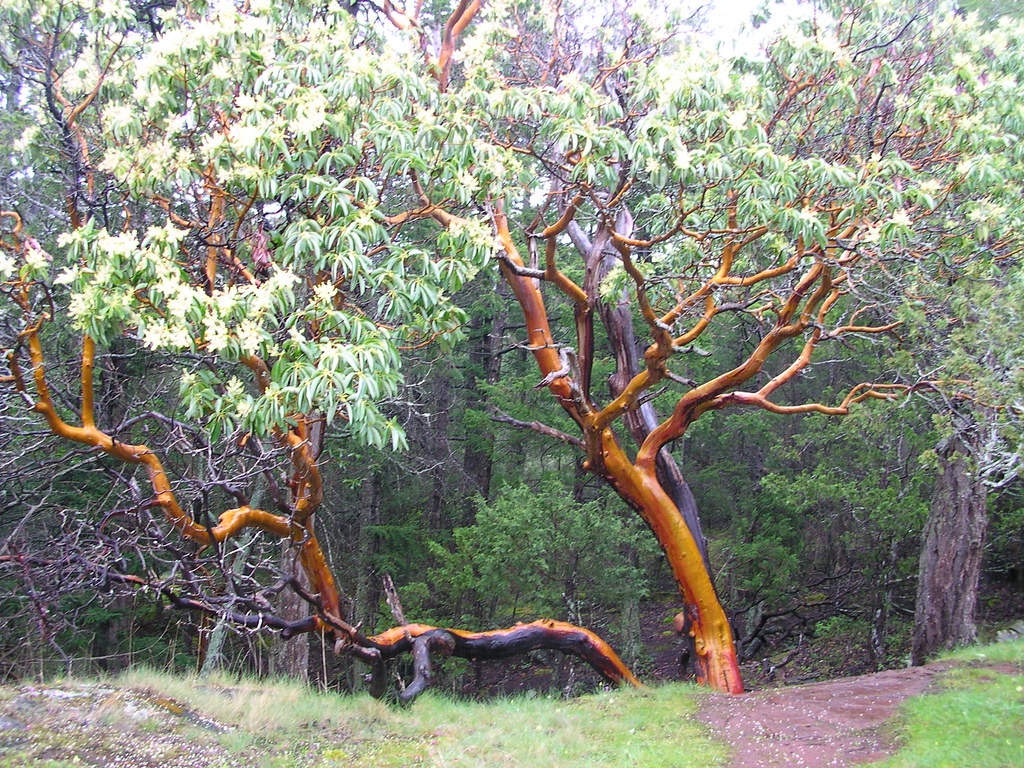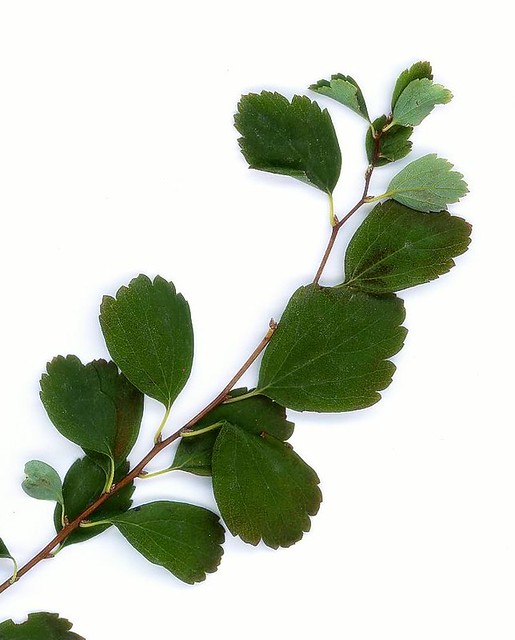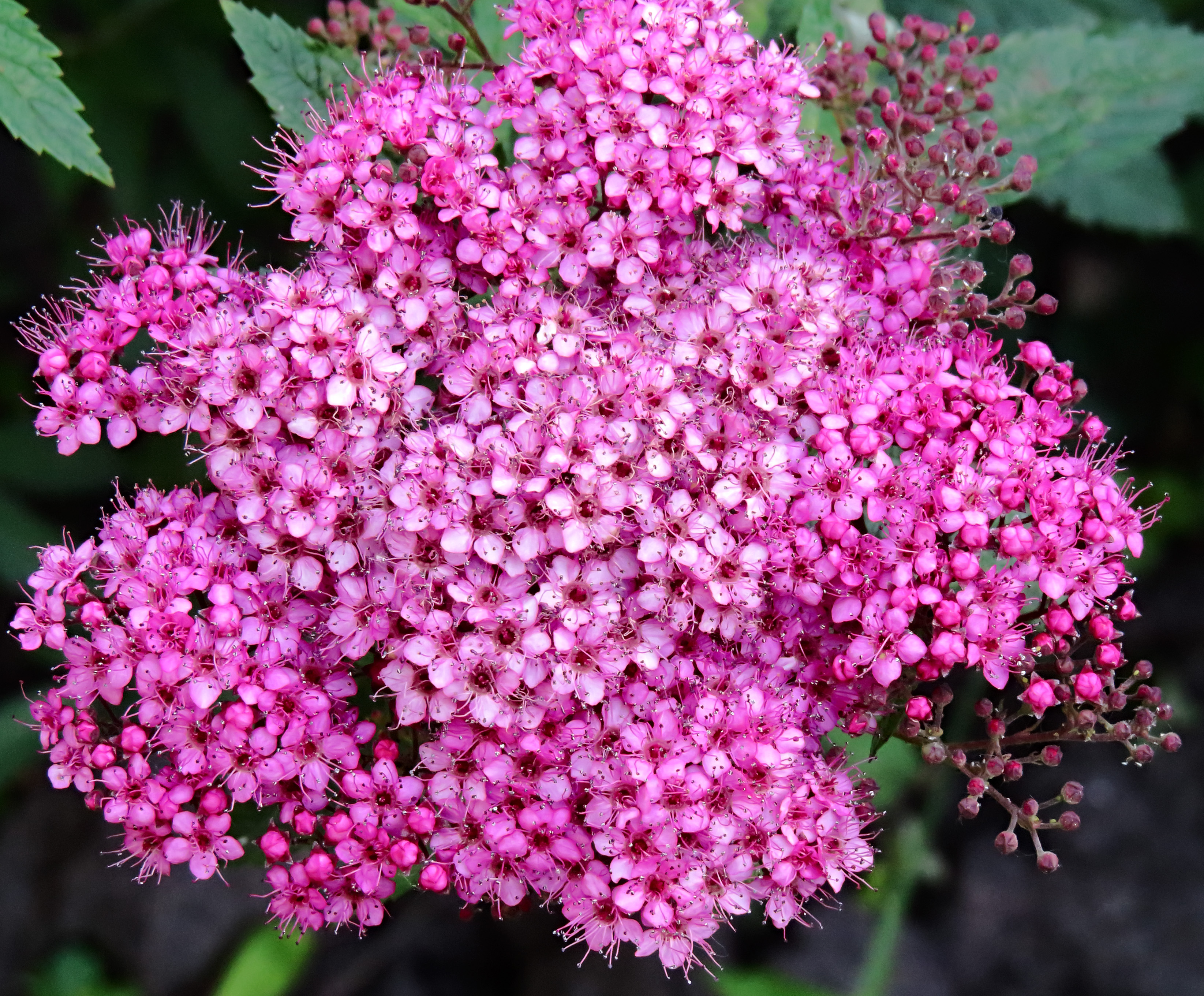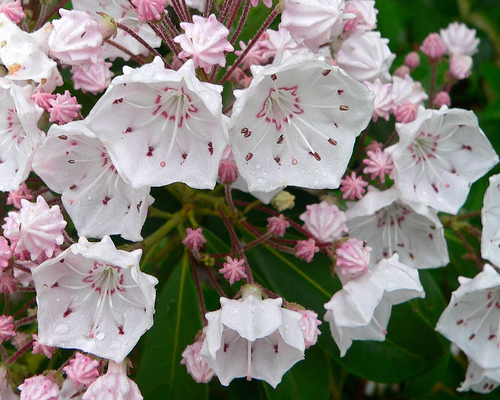Arbutus menziesii
Common name: arbutus
Family: Ericaceae
Leaf: thick, with a waxy texture, oval, 2-6" long, arranged spirally, glossy dark green above and lighter, gray-green beneath, entire margin. Leaves are evergreen, lasting a few years before detaching
Flowers: In spring, sprays of white ursulate flowers
Fruit: autumn, red berries
Habit: evergreen tree; Form: irregular, open rounded form
Height: 30-80'
Culture: Plant in well drained, average, well-drained soils in full sun. Fairly drought tolerant once established. Does not like being transplanted at all, and its roots are very sensitive to local disturbance. Susceptible to black spot fungal disease. Seeds in the berries are highly viable- self-seeds well.
Uses: South-facing slope, naturalized areas.
Origin: Western coastal areas of north America from British Columbia to California.
Height: 30-80'
Culture: Plant in well drained, average, well-drained soils in full sun. Fairly drought tolerant once established. Does not like being transplanted at all, and its roots are very sensitive to local disturbance. Susceptible to black spot fungal disease. Seeds in the berries are highly viable- self-seeds well.
Uses: South-facing slope, naturalized areas.
Origin: Western coastal areas of north America from British Columbia to California.


















